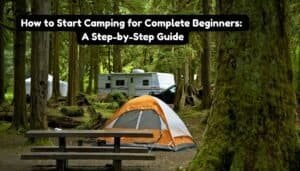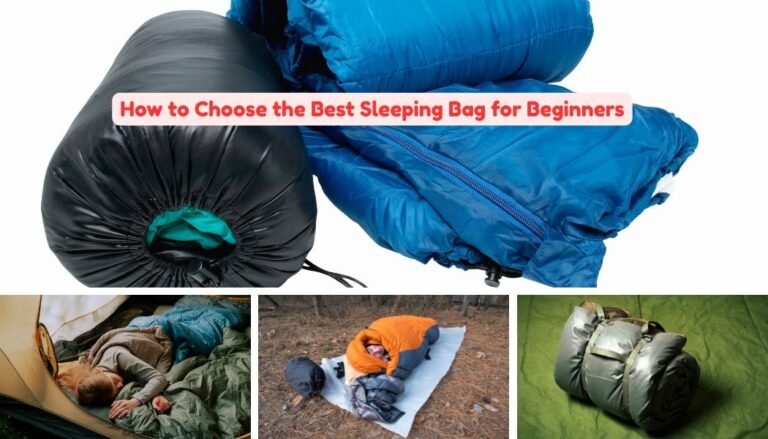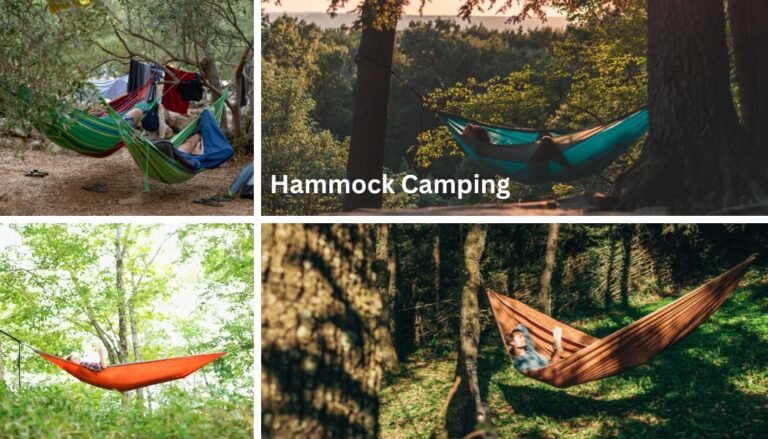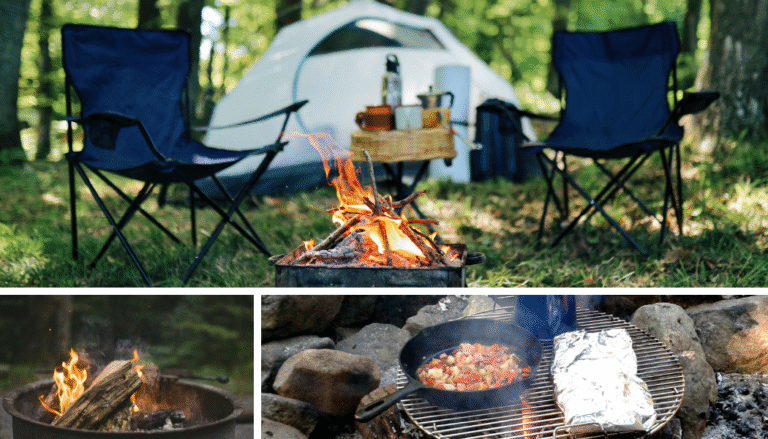Welcome to Your First Camping Adventure: A Beginner’s Guide
Camping for the first time can feel overwhelming, but it doesn’t have to be! Whether you’re interested in the serenity of nature or the thrill of adventure, camping is an experience like no other. Did you know that 46 million Americans go camping every year? If they can do it, so can you! In this guide, ‘How to Start Camping for Complete Beginners,’ I’ll walk you through the essentials to starting your camping journey with no prior experience needed. From choosing the right gear to planning your first trip, let’s get you ready for an unforgettable outdoor adventure!
Why Camping is a Great Adventure for Beginners
Benefits of Camping for Physical and Mental Health
When I first went camping, I didn’t expect it to be such a workout for my body and my brain. Setting up the tent? That felt like a full-body gym session. Hiking to find the perfect spot? Cardio with a view! And then there’s the mental boost. Something about waking up to birds chirping instead of an alarm clock makes your brain feel like it’s rebooting.
Here’s what I noticed: after just one weekend outdoors, I was calmer, slept better, and felt stronger. It turns out camping gets you moving, walking, climbing, chopping wood (if you’re into that kind of thing), and all of it adds up. It’s exercise disguised as fun. Plus, studies show spending time outdoors can lower cortisol, aka the stress hormone. My stress melted away faster than my marshmallow over the campfire.
If you’re new to this, start simple. A one-night trip close to home can work wonders. Do some stretches by the tent in the morning, or just walk a nearby trail. It doesn’t need to be intense; just moving your body in fresh air is enough to kick-start those feel-good vibes.
Opportunities to Reconnect with Nature
Camping makes you look at the world differently. I’ll admit, before my first trip, I couldn’t tell a maple tree from a pine. But something happens when you’re out there; it’s like nature pulls you in. The sound of leaves rustling, the smell of damp earth, even the stars at night (seriously, so many stars); you start noticing things you’d never catch scrolling your phone.
One moment I’ll never forget was spotting a family of deer at dawn. I’d woken up early, okay? The birds woke me up, and as I sipped my campfire coffee, there they were, grazing just a few feet away. I couldn’t help but think about how disconnected we get from these simple joys in everyday life. Camping gives you a front-row seat to nature’s show, and it’s the best reset button I’ve found.
A tip? Leave your electronic devices behind or, at the very least, put them on airplane mode. Bring a journal instead. Sketch the view, jot down your thoughts, or take a few pictures. You’ll be amazed at how grounding it feels to unplug and really see what’s around you.
Budget-Friendly Vacations
Let’s talk money because camping doesn’t have to cost much. My first trip was as cheap as it gets: borrowed gear, a campsite fee of $15, and groceries I would’ve bought anyway. Compare that to a weekend in a hotel, and camping wins hands down.
Even if you splurge a little on some essentials, like a good sleeping bag or a portable stove, it’s an investment that pays off trip after trip. You don’t need fancy gadgets; start with the basics.
Pro tip: Thrift stores and rental shops are gold mines for affordable gear.
One of the best parts about camping is how little you need to enjoy it. Nature provides most of the entertainment, sunsets, streams, and endless trails. Pack a good book, some snacks, and a few cozy layers, and you’re set for a vacation that doesn’t leave your wallet hurting. Plus, you’ll come back with stories (and photos) that feel priceless.
Choosing the Right Camping Style for You
Tent Camping: A Classic Option
Tent camping is what most people picture when they think of “real camping.” It’s just you, a piece of fabric, and the great outdoors. My first experience with tent camping was humbling. I thought setting up a tent would take ten minutes, but it took an hour. But once it was up, the satisfaction was unmatched.
The best thing about tent camping is how close you get to nature. You hear every rustle of the wind, every chirp of crickets, and maybe even a squirrel trying to rummage through your food stash. It’s minimalistic, which makes it both challenging and rewarding.
If you’re new to this, start with an easy setup tent. Look for something labeled “two-person,” even if it’s just you; it’ll give you extra space for gear. Practice setting it up at home first (trust me, this is key). Bring a good sleeping pad, too, because the ground is less forgiving than your bed.
Car Camping: Convenience Meets Nature
Car camping is like tent camping’s laid-back cousin. You drive right up to your campsite, so there’s no lugging heavy gear through the woods. I love car camping when I want to enjoy the outdoors without breaking my back. Plus, you can bring more stuff, like a cooler full of snacks and a folding chair for lounging.
One of my favorite car camping memories is cooking breakfast on a portable stove while sitting on the tailgate of my truck. There’s something special about having everything within reach but still feeling immersed in nature. It’s also great for beginners because you can bail into your car if the weather gets rough or if the wildlife feels a little too friendly.
Pack wisely, though. Keep your essentials organized in bins or bags so you’re not rummaging around in the dark for a flashlight. And if you’re camping in a park, make sure you know the rules; some places have restrictions on where you can park overnight.
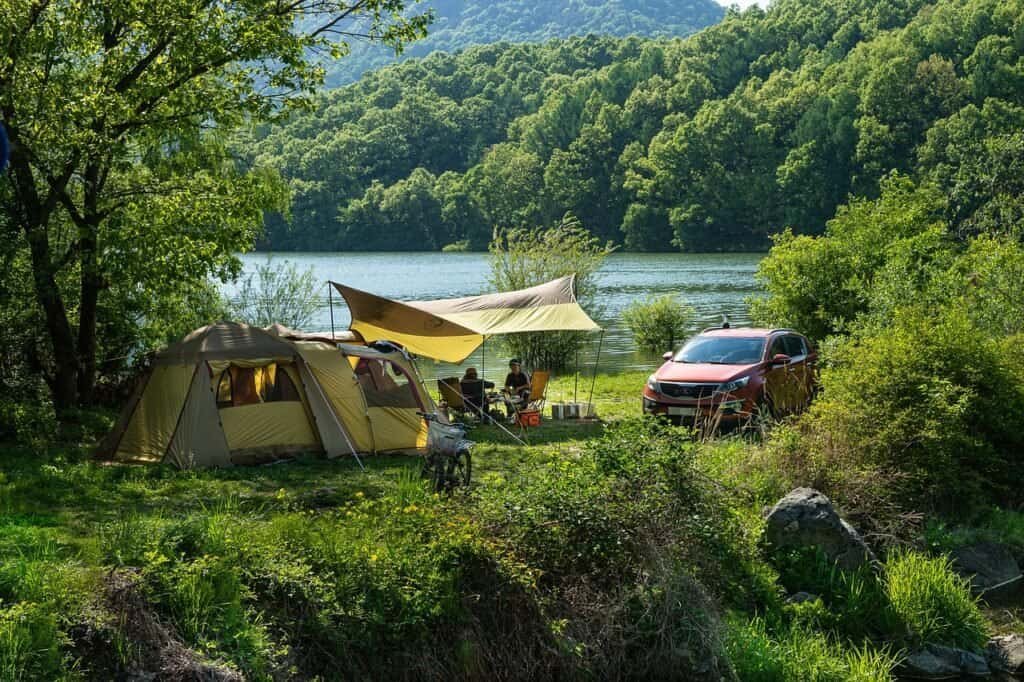
RV Camping: Comfort for Beginners
I’ll admit that RV camping isn’t my usual style, but when I tried it with a friend, I was surprised by how much I enjoyed it. It’s like having your own little hotel room on wheels, complete with a bed, a kitchen, and sometimes even a bathroom. For anyone nervous about “roughing it,” RV camping is a game-changer.
The best part? You get to experience the outdoors without sacrificing creature comforts. On that trip, we parked near a lake and spent the evening grilling burgers while watching the sunset. When it got chilly, we just headed inside to cozy up. No fumbling with zippers or dealing with damp sleeping bags.
RVs can be pricey, but renting one is a good way to test the waters. Just make sure you’re comfortable driving something larger than a regular car, so it takes some getting used to.
Glamping: Camping with Luxury
Glamping is where nature meets Netflix. Think tents with electricity, cabins with Wi-Fi, or yurts with actual beds. I tried glamping once for a friend’s birthday, and while it felt more like a boutique hotel than a campsite, it was a blast. It’s perfect for people who want the camping vibe without giving up comfort.
The beauty of glamping is that it’s stress-free. You don’t have to pack much beyond your clothes and toiletries because everything is already set up for you. On our trip, we had a hot tub (yes, a hot tub) and a fire pit with pre-chopped wood. It’s a fantastic way to dip your toes into camping if you’re unsure about committing to traditional options.
That said, glamping can be pricey, so it’s more of a special-occasion splurge than a regular getaway. But for the convenience and luxury, it’s hard to beat.
Essential Gear You Need to Start Camping
Tents: What to Look For in Size, Material, and Setup
Choosing the proper tent can make or break your camping experience. My first tent was way too small. I didn’t realize that a “two-person tent” actually meant “two people crammed like sardines.” If you like extra room (and trust me, you will), go one size up.
Material matters, too. Look for tents with waterproof ratings (often listed as mm) and a rainfly. On one trip, I skipped this step and learned the hard way when a surprise storm turned my tent into a wading pool. Easy setup is also crucial. Opt for tents with color-coded poles or “pop-up” designs, especially if you’re a beginner.
Sleeping Bags and Pads for Comfort
Don’t underestimate the importance of a good sleeping bag. Mine once left me shivering because I didn’t check the temperature rating. If you’re camping in colder weather, look for one rated 10–20°F lower than the expected temperature. For summer, a lightweight option works fine.
And then there’s the sleeping pad. I skipped it once; that was a big mistake. The ground is colder and lumpier than you think. A foam pad or inflatable mattress can be the difference between a rough night and waking up refreshed.
Cooking Equipment: Stoves, Utensils, and Cookware
Camp cooking can be a highlight or a headache. A portable stove is a lifesaver; they’re compact, easy to use, and much safer than building a fire if you’re not experienced. On one trip, I forgot a pot and ended up cooking eggs in a borrowed frying pan; lesson learned.
A basic kit should include a pot, pan, utensils, and a cutting board. Don’t forget a can opener (trust me, struggling to open canned beans with a knife is not fun). Reusable plates and utensils reduce waste, and collapsible options save space.
Lighting: Lanterns and Flashlights
You’d be surprised how dark it gets in the wilderness. I once assumed my phone flashlight would be enough, and it wasn’t. A good lantern illuminates your campsite, while a headlamp frees your hands for tasks like cooking or setting up in the dark.
Rechargeable options are eco-friendly, but bring backups like extra batteries or a small solar charger. Glow sticks are also fun for kids and make finding your tent easier at night.
Clothing for Different Weather Conditions
Camping means preparing for anything Mother Nature throws at you. I learned to layer after a chilly night in just a hoodie. Start with moisture-wicking base layers, add an insulating layer like fleece, and top it with a waterproof jacket.
Pack extras, especially socks and footwear, because wet feet can ruin your day. Don’t forget a hat and gloves for cooler weather, even in summer. And if you’re camping somewhere sunny, lightweight, long-sleeved clothing protects against sunburns and bugs. Having the right gear ensures you’ll stay comfy no matter what.
How to Plan Your First Camping Trip
Picking a Beginner-Friendly Campsite
When I planned my first camping trip, I naively picked a remote site, thinking it would be peaceful. It was peaceful, but it was also completely isolated, and I wasn’t ready for that. A beginner-friendly campsite is key. Look for ones with easy access to amenities like water, bathrooms, and clearly marked trails. State and national parks are great options—they’re well-maintained and usually staffed by rangers who can answer your questions.
Consider proximity, too. Choose a site close to home, so if something goes wrong (like forgetting half your gear – been there), you’re not hours away from a solution.
Understanding Campsite Amenities
Every campsite is different. Some offer the works—electric hookups, picnic tables, fire rings; while others are bare-bones. On one trip, I didn’t realize the site had no water, which led to a long, frustrating drive to the nearest gas station.
Always read the site description carefully. If it lists “primitive camping,” expect no frills. If you’re unsure, call ahead or check reviews online. Having a clear understanding of what’s provided will save you time, money, and stress.
Checking Weather Conditions and Packing Accordingly
Weather can either make or break your camping trip, so check the forecast religiously in the days leading up to your departure. I once ignored a rainy forecast, thinking it would pass. Spoiler: it didn’t, and I spent the weekend soaked.
Pack for all scenarios. Even in summer, temperatures can drop at night, so be sure to bring layers. If rain is expected, waterproof everything, your tent, jacket, and even your gear bags.
Pro tip: Pack clothes in plastic bags to keep them dry and protected.
Planning Meals and Snacks for the Trip
Meal planning might seem like a chore, but it’s worth the effort. My rookie mistake was bringing only canned soup and granola bars, and it got old fast. Think about easy-to-cook meals like pasta, tacos, or foil packet dinners.
Snacks are crucial, too. Pack items like trail mix, fruit, or beef jerky to keep energy levels up during hikes or other activities. Don’t forget the coffee or tea if you’re a morning caffeine person, as it makes chilly mornings much more bearable.
Reserving Your Campsite in Advance
Campsites fill up fast, especially in popular areas or during peak seasons. I learned this the hard way when I tried to “wing it” and ended up camping in an overflow parking lot. Reserve your site as early as possible to avoid disappointment.
Most parks and private campgrounds let you book online, and some even let you choose a specific site. Look for spots with shade, level ground, and proximity to amenities like restrooms. Knowing you have a guaranteed spot takes a huge weight off your shoulders and lets you focus on enjoying the trip.
Setting Up Your Campsite Like a Pro
Choosing the Best Spot for Your Tent
Picking the right tent spot can make or break your night’s sleep. I once set up on a slope, thinking it wasn’t a big deal, and woke up crammed into one corner of the tent. Lesson learned. Choose a flat, level area with good drainage. If rain is in the forecast, avoid low spots where water might pool.
Look for natural shade, especially in hotter climates, but don’t set up directly under trees, as they drop sap, branches, and even bugs. Also, check for rocks, roots, or uneven ground before you stake your tent down. Trust me, a five-minute check saves a lot of discomfort later.
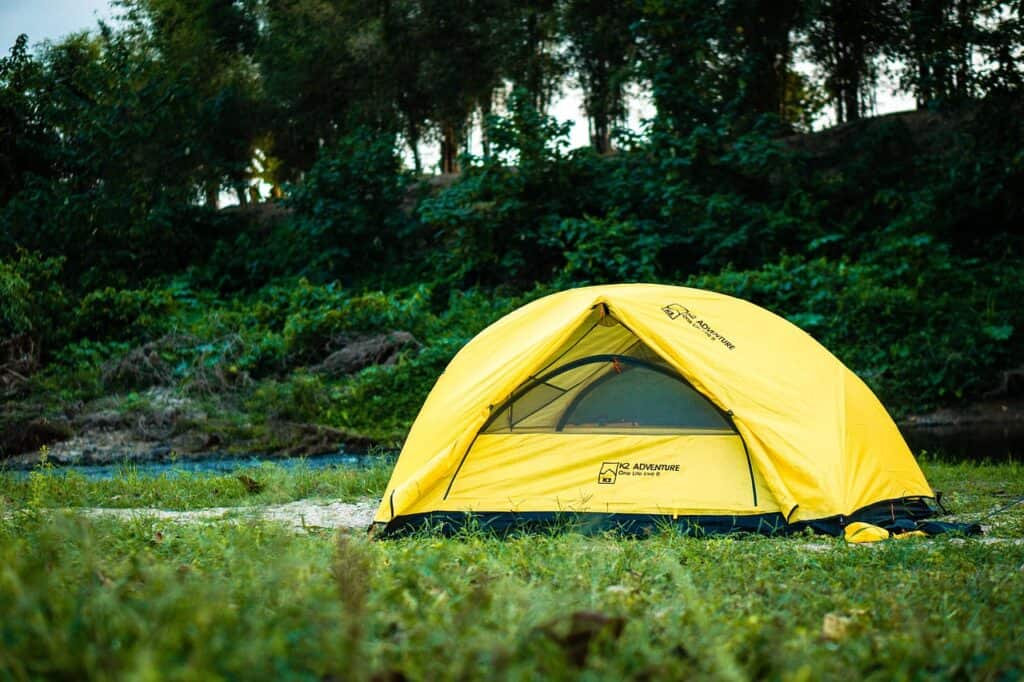
Step-by-Step Guide to Pitching a Tent
- Unpack and lay out your tent: Find all your poles, stakes, and the rain fly. Double-check that nothing is missing. I once forgot stakes and had to make some with sticks.
- Clear the area: Remove debris like rocks and twigs where your tent will sit.
- Lay down a ground tarp: This adds a waterproof barrier and protects the bottom of your tent.
- Assemble the poles: Most modern tents use snap-together poles. Match them with the tent’s corresponding sleeves or clips.
- Erect the tent: Secure the poles and attach the tent body to the frame. This part gets easier with practice, and don’t be discouraged if it feels awkward at first.
- Stake it down: Anchor the tent to the ground with stakes, pulling the fabric taut.
- Attach the rainfly: Even if it’s clear, always put it on. Weather can change in an instant.
Organizing Your Campsite for Safety and Convenience
Organization is key to a stress-free camping experience. Keep your tent upwind from your campfire to avoid smoke blowing inside. Designate separate areas for cooking, eating, and sleeping to minimize mess and odors that could attract wildlife.
Store all your food in sealed containers off the ground or a bear-proof locker if available. I once left snacks in my tent, a big mistake. Critters are sneakier than you think. Also, keep essentials like flashlights, a first-aid kit, and water easily accessible.
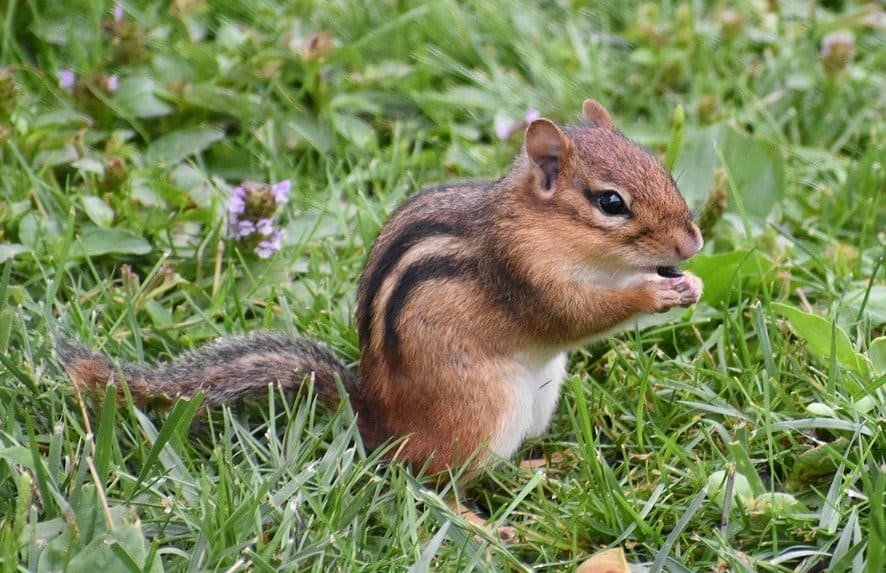
Following Leave No Trace Principles
The first time I heard “Leave No Trace,” I thought it just meant picking up trash. It’s much more than that. Always pack out what you packed in, including food scraps, because even biodegradable items can disrupt local ecosystems.
Stay on marked trails and campsites to avoid damaging vegetation. When nature calls, use a designated bathroom or dig a small hole at least 200 feet from water sources. Simple actions like these ensure the outdoors stays beautiful for everyone.
Setting up your campsite doesn’t have to be overwhelming. With a little planning and care, you’ll feel like a pro in no time.
Essential Camping Safety Tips
Basic First-Aid Knowledge
Basic first-aid skills can make a world of difference on a camping trip. I learned this when my friend got a nasty cut while chopping wood, and all we had was duct tape (it worked, but not ideal). Bring a well-stocked first-aid kit with bandages, antiseptic wipes, pain relievers, tweezers, and blister pads.
Knowing how to handle common outdoor injuries, like cuts, burns, or sprains, is invaluable. Take a moment to review first-aid basics before heading out. Also, remember to pack personal medications and keep them easily accessible.
Wildlife Awareness and Safety
Wildlife encounters are part of the camping experience, but they can be risky if you’re not prepared. On one trip, I left snacks out overnight and woke up to raccoons raiding my site. Lesson: Store food securely in bear-proof containers or hang it from a tree if necessary.
Research the local wildlife before your trip. Knowing how to react to animals like bears, snakes, or even bugs is critical. For example, never run if you see a bear; stand your ground, make noise, and slowly back away. Always check your shoes in snake-prone areas before putting them on.
Fire Safety Protocols
Campfires can be cozy and fun, but they require caution. I’ve seen someone light a fire without clearing the area, and the grass caught fire. Always build your fire in a designated pit or clear an area away from flammable materials, like dry grass or overhanging branches.
Keep water nearby to extinguish the fire completely before leaving or going to bed. Never leave a fire unattended; it can spread faster than you think. Also, follow local fire regulations. Some places prohibit fires during dry seasons to prevent wildfires.
Check out our article: How to build a proper campfire.

Getting lost is easier than you’d think. I once wandered off-trail to “explore” and ended up walking in circles for hours. Now, I always carry a map and compass, and GPS device, and more importantly, I know how to use them.
Stick to marked trails, especially if you’re new to the area. Share your itinerary with someone back home and check in if possible. A whistle and a flashlight are small yet essential tools for signaling if you get lost.
Safety doesn’t mean you have to be paranoid. It just means being prepared. A few simple precautions ensure your camping trip stays memorable for the right reasons.
Fun Activities to Make the Most of Your Camping Trip
Hiking and Exploring Nature Trails
Hiking is hands down one of the best parts of camping. I’ll never forget my first trail, a simple two-mile loop that led to a stunning waterfall. It felt like discovering a secret world hidden just beyond the trees.
Choose trails that match your skill level. For beginners, opt for well-marked and shorter routes. Bring a small daypack with essentials, like snacks, water, and a first-aid kit. And don’t forget to pause and take in the sights, sounds, and smells around you; it’s not a race, after all.
Stargazing and Identifying Constellations
Stargazing during a camping trip is magical. Out in the wilderness, far from city lights, the sky comes alive. I remember lying on a blanket with a star map app, excitedly identifying the North Star and the Big Dipper for the first time.
Bring a pair of binoculars or a telescope for a closer look. If you’re new to constellations, download a stargazing app to help you locate the constellations in the night sky. Don’t forget to bundle up for those clear, starry nights that can get chilly fast.

Campfire Cooking and Storytelling
There’s something about campfire cooking that makes everything taste better. Whether it’s s’mores, hot dogs, or foil packet meals, the simplicity is part of the charm. On one trip, I experimented with campfire pizza; it wasn’t perfect, but it was fun!
Storytelling around the fire is another classic camping activity. Share ghost stories, funny memories, or make up something silly on the spot. It’s a great way to bond with friends or family and create lasting memories.
Games and Activities for Families or Solo Campers
Camping is the perfect time to unplug and get creative with games. For families, classics like charades, scavenger hunts, or campfire songs are always a hit. I once organized a nature bingo game for the kids; it kept them engaged and taught them about local plants and animals.
Solo campers can enjoy activities like journaling, sketching, or photography. I love capturing the small details of the campsite, like the way the morning light hits the dew-covered grass. Board games, card games, or even just a good book can also add a layer of fun to your trip. Don’t forget to bring your pet with you. They will enjoy camping, too.
Camping is all about enjoying the moment and making the experience your own. Whether you’re hiking trails, cooking by the fire, or gazing at the stars, there’s no wrong way to embrace the adventure.
Overcoming Common Camping Challenges
Staying Dry During Unexpected Rain
Rain is inevitable when camping; it’s just part of the adventure. I’ve learned this the hard way after waking up in a soggy sleeping bag because I forgot to secure the rain fly. Now, I always pack several waterproof tarps and a groundsheet, which doubles as an emergency shelter or extra coverage for gear.
Set up your tent on higher ground to avoid puddles forming underneath, and make sure the rain fly is snug and properly attached. Keep a set of dry clothes in a sealed bag, just in case. A lightweight poncho or waterproof jacket is also a lifesaver for moving around the campsite during a downpour.
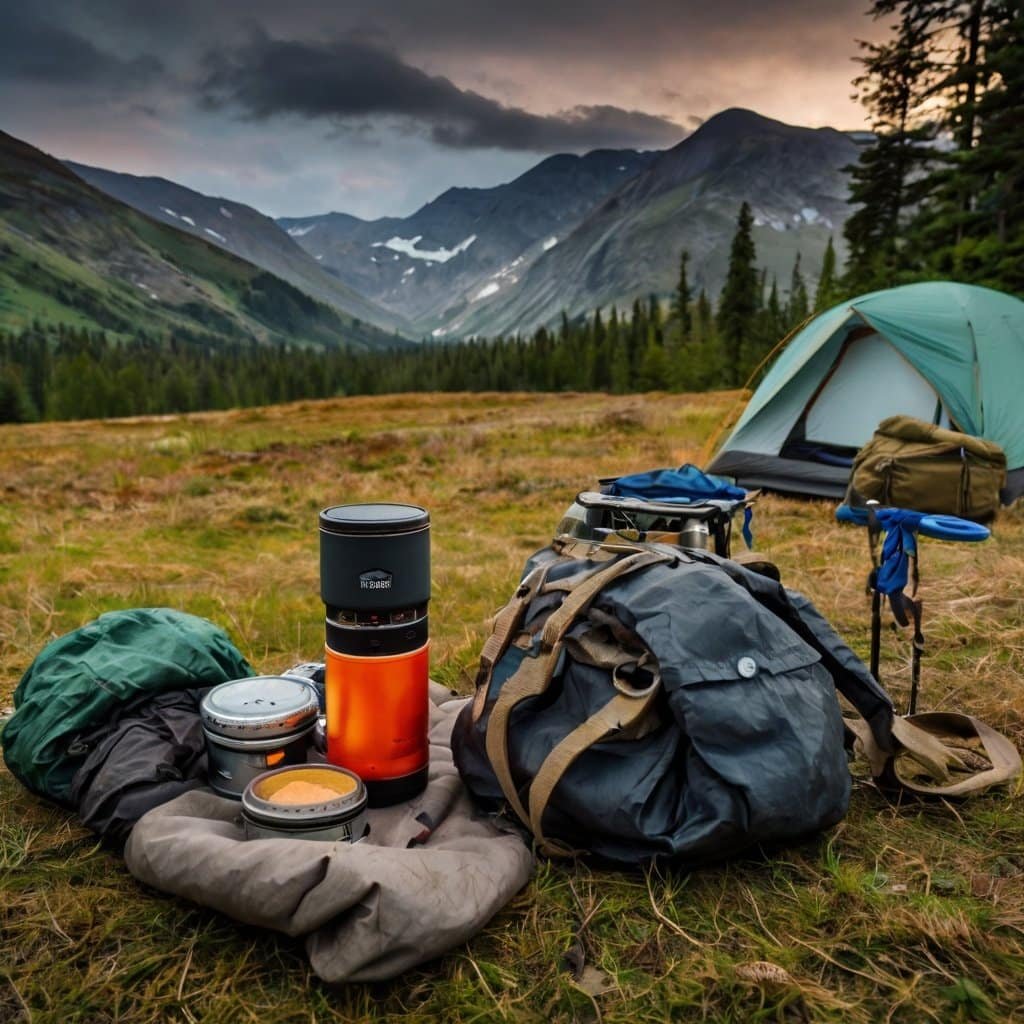
Dealing with Insects and Pests
Bugs are part of nature’s package deal, but they don’t have to ruin your trip. I’ll never forget the mosquito ambush on my first camping trip; I looked like I’d lost a battle with poison ivy! Now, I swear by a good insect repellent with DEET or natural alternatives like citronella.
To avoid pests, keep food sealed and stored away from your sleeping area. Consider using a bug net for sleeping and eating, especially in buggy areas. And always check for ticks after hiking; it’s better to be safe than sorry.
Managing Temperature Changes at Night
Temperatures can drop quickly at night, even in warm climates. I once camped in the desert and underestimated how cold it would get after sunset. Layering is your best friend; pack thermal underwear, a warm hat, and a sleeping bag rated for the lowest expected temperature.
A foam or inflatable sleeping pad adds insulation between you and the cold ground. Before bed, do some light activity (like a few jumping jacks) to warm up, but don’t overheat. Also, resist the urge to burrow completely into your sleeping bag; ventilation prevents condensation, keeping you drier and warmer.
What to Do If You Forget Something Essential
Forgetting an essential item happens to everyone, even seasoned campers. I once forgot my matches and ended up borrowing a lighter from a neighboring camper (who thankfully didn’t mind). If you’re near a campsite store, they might have basic supplies.
Get creative with what you have. Forgot a pillow? Roll up a sweater or jacket. Missing a pot? Use sturdy foil to cook over the fire. It’s all part of the experience, and improvising can sometimes lead to unexpectedly fun moments.
Camping challenges are just opportunities in disguise. With a little preparation and flexibility, you can handle whatever comes your way and have a great story to share when you’re back home.
Sign up for our newsletter and get a free camping checklist.
Your First Camping Experience Awaits: Final Thoughts and Encouragement
Camping is a skill you build one trip at a time. Start small, stay prepared, and embrace the joys of the outdoors! With the right preparation and mindset, you’ll find that camping isn’t just an activity; it’s a lifestyle. Ready to pack your bags and pitch your tent? Adventure awaits, so let’s get started!
FAQ Section
What is the easiest camping option for beginners?
Car camping is often the easiest option for beginners as it allows you to drive directly to your campsite with all your gear. You won’t have to hike long distances, and you can enjoy the convenience of having your vehicle nearby.
What essential items should I bring for my first camping trip?
You’ll need a tent, sleeping bag, sleeping pad, cooking gear, food, water, weather-appropriate clothing, a first-aid kit, and a light source like a flashlight or lantern. A checklist can help ensure you don’t forget anything important. Sign up for our newsletter and get a free checklist.
How do I stay safe while camping in the wilderness?
Safety starts with preparation. Always inform someone of your trip details, bring a first-aid kit, check weather conditions, and stay aware of your surroundings. Learn basic wildlife safety and follow fire safety protocols.
How can I keep insects away while camping?
To minimize insects, use bug repellent, wear long-sleeve clothing, and keep your campsite clean by storing food securely. Consider using a tent with mesh panels and lighting a citronella candle to deter mosquitoes.
What should I do if it rains during my camping trip?
Stay prepared by bringing a waterproof tent, a rain fly, and a tarp for extra protection against the elements. Pack quick-drying clothes and extra socks to stay warm and dry. Embrace the adventure; rainy camping trips often create unique memories!
Disclaimer: This blog post contains affiliate links

